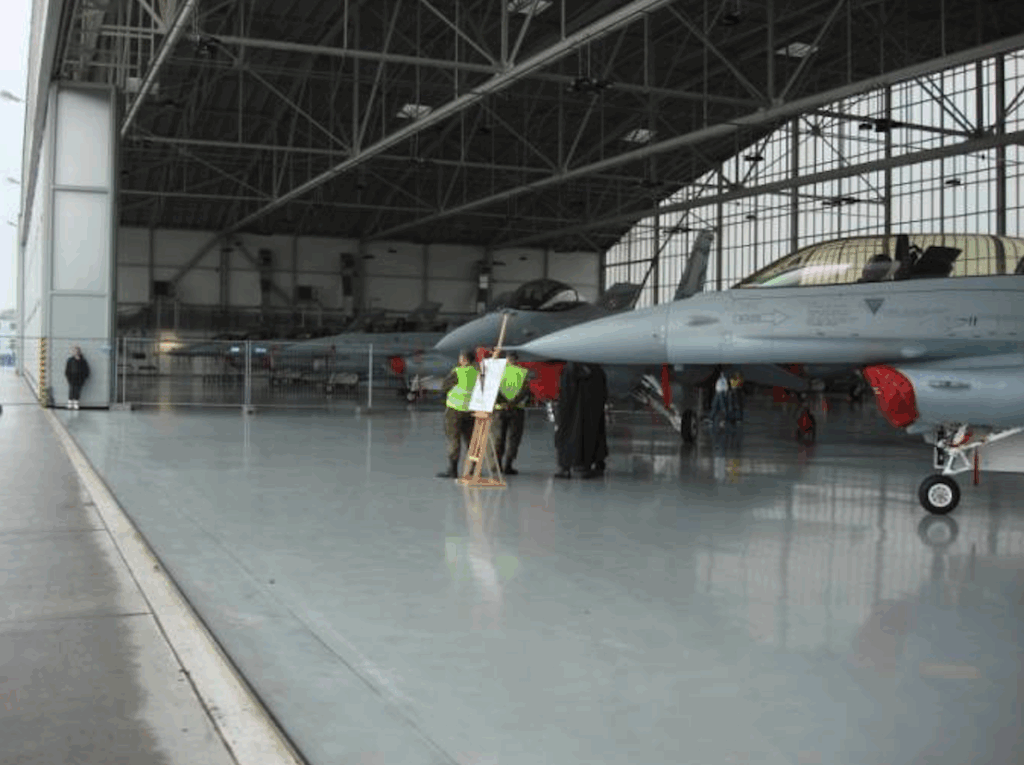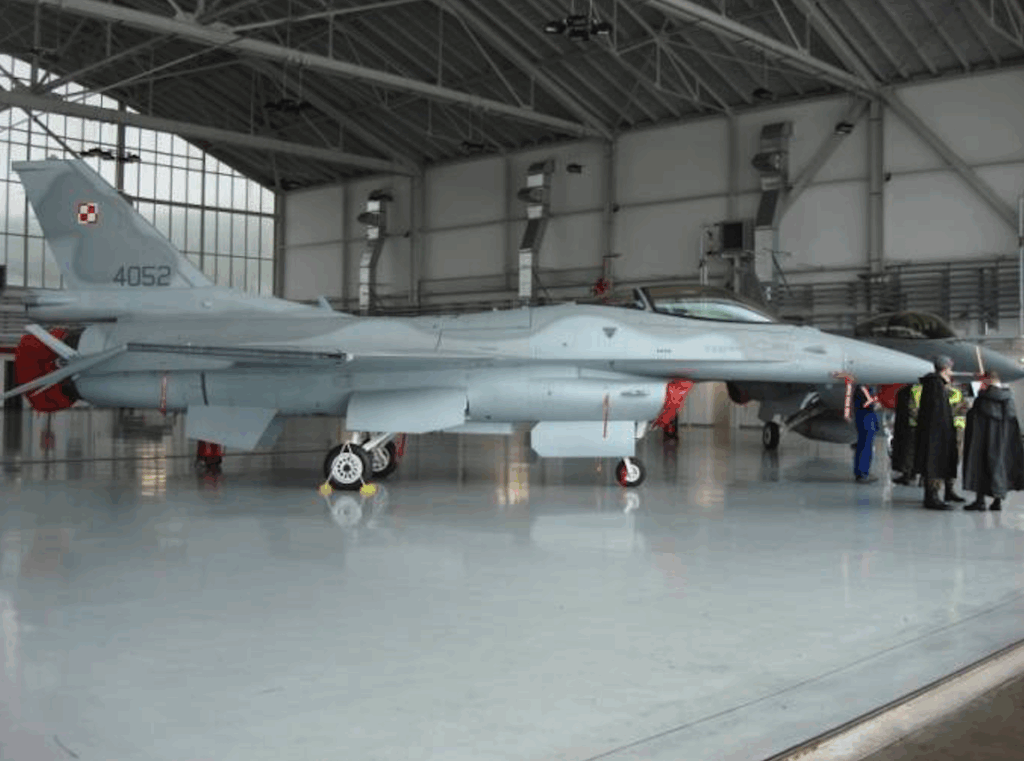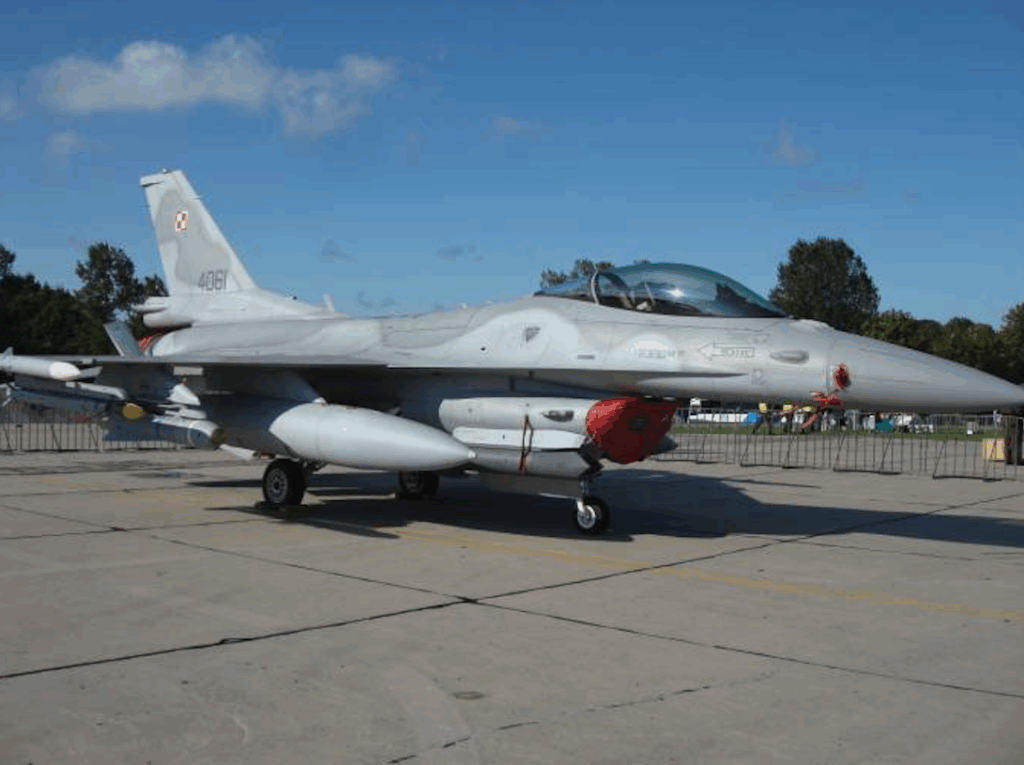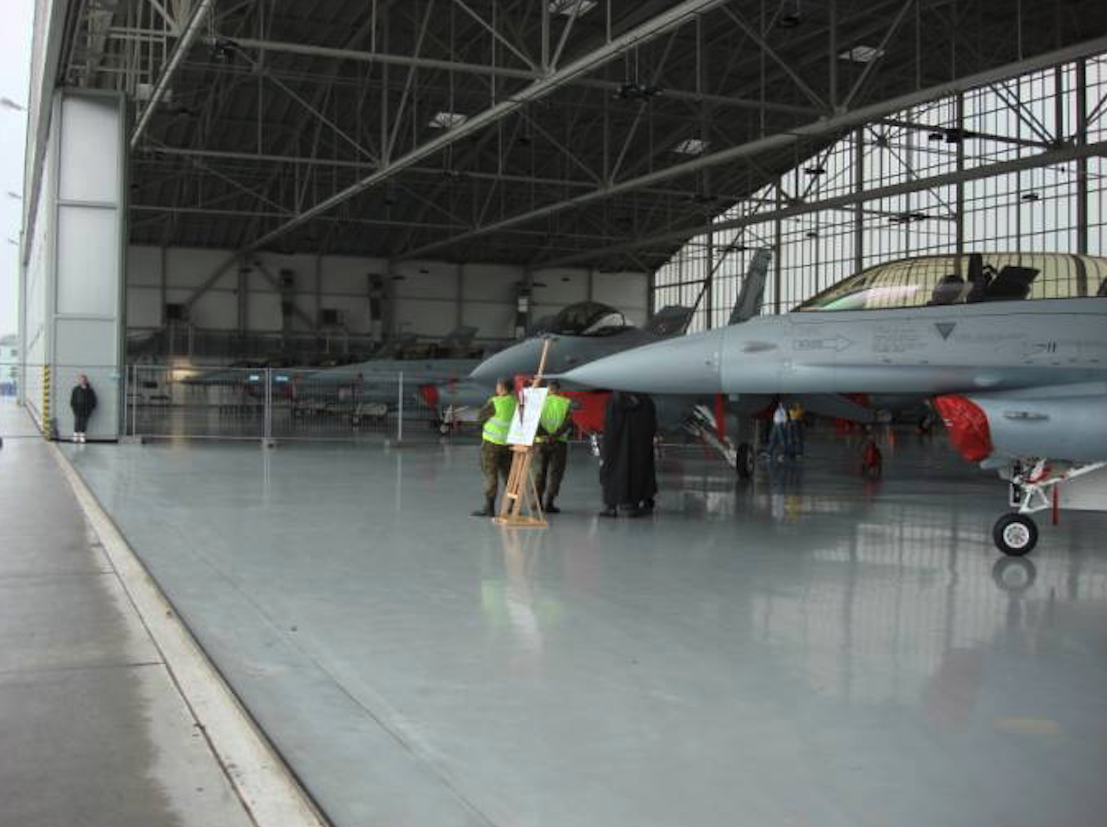Kraków 2008-03-21
The matter of the offset for the F-16 planes from the perspective of five years.



What is offset?
In order to understand the essence of offset well, we must go back to the turn of the 80’s / 90’s. We had the first free elections in Poland, the Berlin Wall is torn down in the West, and the CCCP is breaking up into individual republics. The result is the end of the Second Cold War, between East and West. The risk of another world war breaking out has decreased. Armament factories stopped production. Research institutes have slowed down the work on new technologies. It was more and more difficult for armaments companies to sell their products. So, in order to encourage potential customers to buy weapons, an offset was invented, which is a form of compensation for the funds allocated for the purchase of weapons. Unfortunately, in the Polish post-communist reality, it only became a propaganda tool. We couldn’t use it well.
On Friday, December 27, 2002, Lockheed Martin’s victory in the competition for WSB (multi-purpose combat aircraft) for Poland was officially announced, scoring 90 points out of 100 possible. The declared offset amounted to over USD 9.5 billion (277% of the offer price), however, after conversion by Poland, USD 6 billion (170%) was included. The defeated consortia include; Gripen International (JAS-39 C / D Gripen) scoring approx. 90 points. The offset offer was to amount to approx. EUR 7.5 billion (233%), but only EUR 4.7 billion (146%) was included. And Dassault Aviation (Mirage 2000-5EPL / DPL), which was disqualified as the offered offset (EUR 3.8 billion – 105%), after conversion by Poland, was valued at EUR 2.1 billion, which was only 60% of the contract value (the Polish side required at least 100%).
The contract for the purchase of 48 F-16 machines, however, could not have been signed if by the end of May 2003 the orders that the US companies undertook to place in Poland had not been made. In such a case, the Polish government would start talks with the producers of the Gripen aircraft, which slightly lost to the F-16. This is important because the Ministry of Economy, through its secretary Andrzej Szarawarski, has repeatedly emphasized that the offset proposals are far from satisfactory and the Americans should supplement them. At the same time, we did not see the assembly of the F-16 in Poland.
Contract – April 18, 2003.
On Friday, April 18, 2003, a contract was signed at the WSO of the Air Force in Dęblin, finalizing the delivery of 48 WSB units worth $ 3.5 billion. On that date, four contracts were validly signed; main contract, financial agreement, loan agreement in the amount of $ 3.8 billion, compensation agreement commonly known as the offset agreement.
Let us recall that Poland demanded that the compensation amount to a minimum of 100% of the main contract and that the investments should be placed in the Polish economy. There was no longer any question of a 70% offset in the arms industry. This was due to the systematic destruction of Polish Armaments by Freemasonry and fears that the obtained offset would not be anything to use. Once again, the offset aroused the most emotions. In its structures, the Americans even included investments already made in Poland, and previously not related to the WSB program.
Also the communist-liberal economy minister Jerzy Hausner announced that “that 43 offset proposals amounting to $ 7.5 billion over 10 years have been agreed jointly. And when converted by “special multipliers”, this sum hovered around $ 12 billion and may even increase. ” The details were as follows: WSK PZL Mielec – promotion and sale of Skytruck and Dromader aircraft on the US market. WSK Rzeszów – Pratt & Whitney engine components for our F-16. WSK PZL Świdnik – promotion and sale of W-3 and SW-4 on the US market.
Certainly, the offset contained only a trace amount of “know-how”, that is, the transfer of modern technologies, which was not beneficial. When Poland sells military equipment, “know-how” accounts for several dozen percent of the offset.
You should wait a while to see if something is working well. Let’s take, for example, three years. What do we have? Let’s read what on November 10, 2006, said Bronisław Komorowski, from the Civic Platform, deputy speaker of the Sejm – “The offset agreement concluded with the purchase of the F-16 aircraft did not improve anything in the Polish economy. -This is a lost opportunity. This statement clearly shows that the compensation agreement, commonly known as the offset, was either badly negotiated or we were unable to enforce it. “- The aircraft purchase agreement is accompanied by the offset agreement, which, due to the left-wing government’s fault, is formulated in such a way that it allows not meeting the offset declarations. This contract was badly negotiated and badly signed, ”stated Bronisław Komorowski.
But there is also something very interesting. Let’s read what Bronisław Komorowski, then the Minister of National Defense, also said on July 31, 2000 (that is, at a time when negotiations over the choice of the aircraft were underway) – “There will be no plane, there will be no arms. He will lose, because a refusal to buy a multi-role aircraft would mean a loss of orders of $ 1.5 billion and the inevitable collapse of many companies. ” (A small explanation here. It’s about $ 1.5 billion, because it was 50% of the contract that could only be invested in the defense sector at this stage.). And what? There was a contract and so the arms industry lost, and Mr. Bronisław Komorowski was still involved in the negotiations.
Let’s have a look at how, according to Mr. Bronisław Komorowski, the offset should look like (still statements from 2006); According to the former minister of defense, not used, inter alia, the great opportunity which was to “push” Americans one of the aviation industry plants on the basis of privatization offset “.
Bronisław Komorowski recalled that when he was the Minister of Defense, the Spaniards who sold us transport planes had to buy one of the Polish aviation plants. For 8 CASA planes, the Spaniards had to buy a plant – the smallest and the oldest, in the worst condition – the PZL Okęcie aviation plant in Warsaw. At that time, this plant produced only Ruch kiosks. Today he returned to aviation production, it is the only Polish plant that was included in the European aviation consortium and has clear prospects – argued the politician. According to Mr. Bronisław Komorowski, the same solution could be used when buying a multi-role aircraft for the Polish Army. – It could have been done – by buying 48 F-16 planes – with Mielec. The left, for ideological reasons, and probably also for personal reasons – because the chairman of the defense committee in the Sejm at that time was MP Janas, who is from Mielec – wanted to maintain the state character of this plant, which is in serious trouble today, noted the Deputy Marshal.
In a word, sell off what you can. But I guess we didn’t need an offset for that.
At the end of 2006, the first settlement period of Lockheed Martin’s offset liabilities in Poland was closed. According to the agreement from 2003, Americans are to implement projects in Poland with a total value of $ 6.028 billion by 2013. $ 3.9 billion was realized in the first three years. This is almost a third more than planned for the period 2003-2006. However, value did not translate into quality. It should also be remembered that a minimum of 50% of the offset should go to the aviation and defense industry. A complete fiasco was, among others, a project to help Lockheed Martin to export 100 M-28 Skytruck aircraft manufactured by PZL Mielec. The Americans secured the right to the Skytruck name, and thus blocked the sale of these aircraft. Instead, the plant in Mielec in December 2006 was bought by the American helicopter manufacturer Sikorsky for paying off its debt to the Industrial Development Agency. Ultimately, the US Army purchased 16 C-145 A aircraft, a variant of the M-28 Bryza, which were delivered between 2008 and 2013.
The Americans took over the WSK PZL Rzeszów plant. But now the Polish Army has to buy helicopter parts and engines at prices several times higher. The new owner also refused to produce a gearbox for the Polish SW-4 helicopter. Their production had to be placed in Świdnik, which increased the costs.
Meanwhile, the vast majority of already settled projects (USD 2.8 billion) were addressed to civil sectors. The largest American civil projects implemented so far are: the launch by General Motors of the Opel Zafira production in the Gliwice factory and the acquisition of modern technologies for the production of fuels by the Shell concern for the Lotos Group. But it’s hard to take General Motors’ investment to benefit from the offset. It is rather a boom in the automotive market.
Supplementing the article. 2016 year.
The Ministry of Economy has been cooperating for ten years with Lockheed Martin Corporation on the implementation of the offset obligations related to the purchase of F-16C / D Block 52+ combat aircraft. The main offset agreement was settled in April 2013. In 2015, during the Air Fair in Bydgoszcz, the Offset Agreement Performance Statement was submitted. The protocol included 140 commitments for the amount of $ 6.028 billion. In the last stage, 30 projects were implemented in over 20 companies from the aviation, automotive, energy and defense industries. The beneficiaries of direct or indirect projects include: Mesko, Opel Polska, Wojskowe Zakłady Lotnicze No. 2, Nitrochem, Grupa Lotos, Dezamet, WSK-PZL Rzeszów S.A., PZL Mielec, the Institute of Aviation, and the Air Force Institute of Technology. Polish deputy minister of economy, Arkadiusz Bąk, participated in the ceremonial meeting, and the offset provider was represented by Lockheed Martin’s deputy president for development, Mr. George Standridge.
There is no doubt that many unintentional mistakes have been made in the offset programs. Both at the ministerial level and on the part of Polish companies. No obligation performance appraisal system has been established. Polish interests in specific topics were not well secured by concluding appropriate agreements. Our companies were often not prepared to accept such support. The charges were also brought against the US side.
It is worth recalling that the offset agreement was modified many times. Often to the benefit of the Polish side. Thanks to this, for example, a limited maintenance center for F-16 Jastrząb aircraft was established in Bydgoszcz. Offset secured the acquisition of technological licenses for the “Lotos” group. Construction of a new production line at the Mesko plant producing ammunition, including for the F-16 plots. The plant in Krosno built chassis for the Polish F-16s. The WSK PZL Rzeszów and WZL No. 4 plants assembled and tested engines for the F-16 in Poland.
The case of the F-16 offset was investigated twice by the Supreme Audit Office. First, the first stage of the offset was dealt with. Only 5 out of 20 programs were found to be unqualified. Several adjustments were made as a result of the audit. Then, NIK examined the implementation of the entire program (after stage III). The Association noticed a few significant “mishaps”, but ultimately assessed the implementation of the offset positively. Probably some of these “mishaps” were settled amicably.
Poland has accumulated a lot of experience. As a result, a significant change was made: Previously, the entire offset was controlled by the Ministry of Economy. Now, armaments matters are the responsibility of the Ministry of National Defense. This was reflected in the amended parliamentary act in January 2015. This act also allows for the conclusion of non-offset contracts for purchases below EUR 5 million.
The Office for Offset Agreements was established in the Ministry of National Defense. In 2015, the office had 16 people. The Bureau was headed by Brig. Gen. res. Stanisław Butlak. It has been recognized that offset is not compensation; As long as the cash register is correct, these are two basic goals: First of all – ensuring a relatively long maintenance of new military equipment in the highest possible efficiency. Secondly – launching such technologies in Polish plants that may help in this task and in the modernization of equipment. Currently, there cannot be such a situation that the offset will be associated with technologies that are useless from the point of view of the country’s defense, and this was the case until 2015.
Written by Karol Placha Hetman

